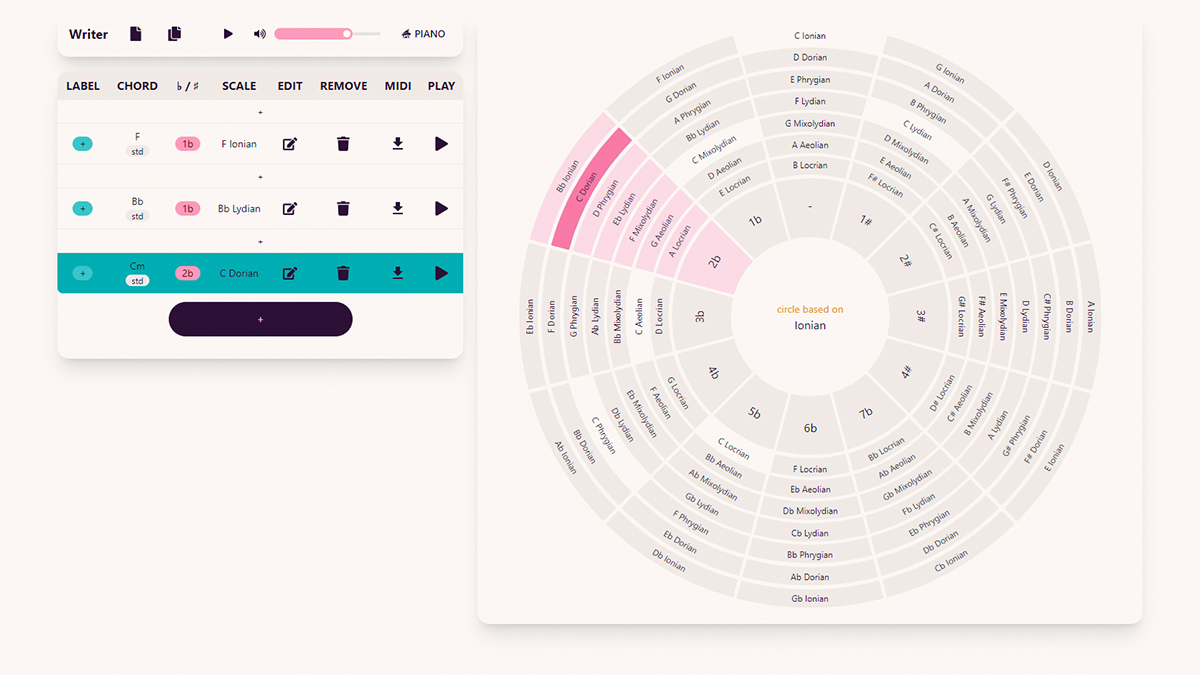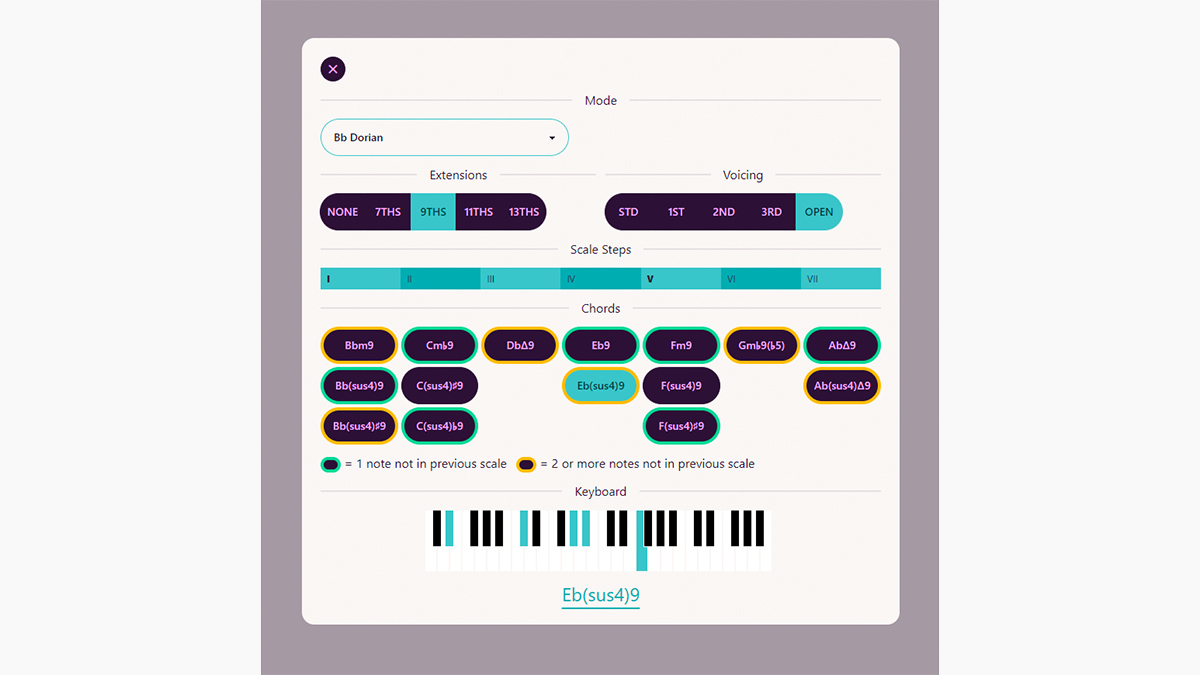Mindful Harmony is a free online chord progression composing tool based on the circle of fifths
It could help you to learn more about music theory and make better, more harmonically rich music

Composing music is a pretty mindful activity in its own right, but there’s certainly an argument to say that putting more focus on harmony, and thinking carefully about modulations between keys, can be of great benefit.
In order to assist you with this, video game composer Sebastian Karikra has created Mindful Harmony, a free web-based composing tool that’s based on that old music theory staple, the circle of fifths.
This encourages you to think carefully about the relationships between different keys and scales, and to create more complex chord progressions that have greater potential to stir the emotions of your listeners.
The action takes place in the Writer tool. This features a graphical representation of the circle of fifths, and a dock section that enables you to choose chords and play them back.
As well as all the major and harmonic/melodic minor scales (you can choose between them), the circle displays the six modes that are derived from each of them. These all contain the same pitches, but have different tonics (root notes).
Mindful Harmony encourages you to introduce subtle or extreme modulation to your compositions by creating chord progressions that move around the circle, modulating between modes as you go to create less ‘obvious’ and more complex music.

Chords can be selected by clicking the plus button in the dock and choosing your next circle destination. The closer the distance between keys, the more subtle the modulation. If you want a more dramatic shift, choose a destination key that’s a fair distance away from your original one.
Want all the hottest music and gear news, reviews, deals, features and more, direct to your inbox? Sign up here.
Once you’ve done this, you’re presented with a new window that enables you to select the mode and chord, with further options for creating extended chords and changing the voicings. To give you a helping hand, chords with one or two notes that weren’t present in the previously selected scale are highlighted.
The chords in your list can either be played back in order or individually using the built-in piano, guitar, string and chiptune sounds. You can also download a MIDI file of each chord or copy the chord list as text. Chords can be labelled, too, for verses, choruses, etc.
We think Mindful Harmony has the potential to be a very useful, inspiring tool that could really help both with your songwriting and your understanding of music theory (there’s a handy Learn section that explains how everything works). As we mentioned, it’s completely free (with no adverts), but if you do find yourself using it, you can reward Sebastian for his hard work by buying him a coffee (ie, making a donation).
You can get started now on the Mindful Harmony website.



I’m the Deputy Editor of MusicRadar, having worked on the site since its launch in 2007. I previously spent eight years working on our sister magazine, Computer Music. I’ve been playing the piano, gigging in bands and failing to finish tracks at home for more than 30 years, 24 of which I’ve also spent writing about music and the ever-changing technology used to make it.